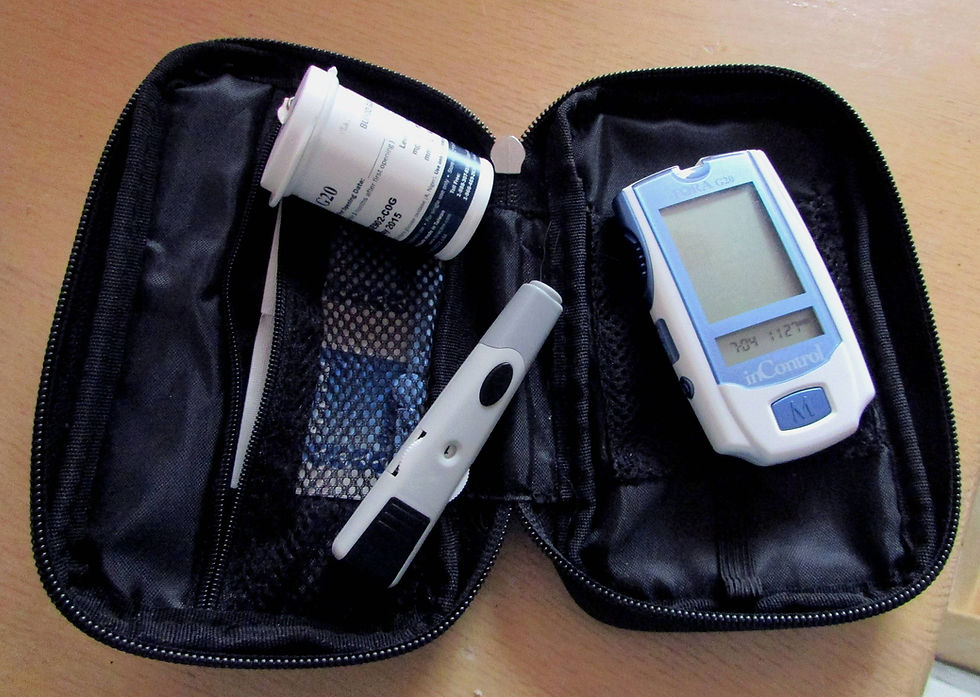Can Prebiotics and Probiotics Help Alleviate Seasonal Allergies?
- Feb 15
- 3 min read
Updated: Mar 27
Spring is here, and with it comes the excitement of warmer days and blooming flowers. But for many people, it also means dealing with the sneezing, itchy eyes, runny nose, and scratchy throat of seasonal allergies. While there’s been a lot of research showing that probiotics and prebiotics can help reduce allergic reactions, the exact way they work wasn’t fully understood—until now.
A 2021 study looked at how combining probiotics with prebiotics could help reduce symptoms of seasonal allergies (also known as allergic rhinitis). Over 90 days, participants who took the probiotic-prebiotic mix saw significant relief from their allergy symptoms compared to those who took a placebo. This improvement was linked to changes in their gut bacteria, including an increase in beneficial bacteria and a rise in helpful compounds like acetate, which can boost the immune system.
The study also found that the treatment group had higher levels of certain immune markers (Th1 cytokines) and lower levels of others (Th17 cytokines), suggesting that the probiotics and prebiotics helped regulate immune function. These findings suggest that the combination of probiotics and prebiotics can help balance gut bacteria, strengthen the immune system, reduce inflammation, and prevent the body from overreacting to allergens. In other words, this combination helps improve allergy symptoms by supporting the gut and immune system.
For more details, check out the visual and link below!
What Are Probiotics and Prebiotics?
You've probably heard about probiotics in the media, whether in yogurt commercials or supplement ads. But what exactly are they? Probiotics are live microorganisms (mostly bacteria and yeast) that offer health benefits when consumed in the right amounts. They help balance the bacteria in your gut, support digestion, boost your immune system, and can even assist with weight management. Common probiotics include strains like Lactobacillus and Bifidobacterium, found in foods like yogurt, kefir, kimchi, and even sourdough bread.
But probiotics aren't the only players in this gut health game. Prebiotics are non-digestible fibers found in foods like garlic, onions, bananas, and oats. These act as food for the good bacteria in your gut, helping them grow and thrive. Prebiotics not only improve digestion but also support a healthy immune system, and can even reduce inflammation.
The Bottom Line
Adding probiotics and prebiotics to your diet isn’t just great for fighting off seasonal allergies. These powerful ingredients can improve your gut health, support digestion, and boost your immune system all year long. Plus, they may even help with mood, anxiety, and mental clarity, and speed up recovery after illness or antibiotics. So why not give your body a little extra support this allergy season—and beyond?
References
Hou, Y., Wang, D., Zhou, S., Huo, C., Chen, H., Li, F., Ding, M., Li, H., Zhao, H., He, J., Da, H., Ma, Y., Qiang, Z., Chen, X., Bai, C., Cui, J., Gao, N., & Liu, Y. Retrieved from Frontier Immunology, original research article (Oct. 2024). Link: Frontiers | Probiotics combined with prebiotics alleviated seasonal allergic rhinitis by altering the composition and metabolic function of intestinal microbiota: a prospective, randomized, double-blind, placebo-controlled clinical trial
Cleveland Clinic health article (2022). Link: What Are Prebiotics and What Do They Do?
1. Yangfan, Wang, Zhou, Huo, Chen, Li, Ding, Li, Zhao, He, Da, Ma, Qiang, Chen, Bai, Cui, Gao, Liu. Front. Immunol., 01 Nov. 2024. Sec. Nutrtional Immunology

Food Revolution Network.




Comentários